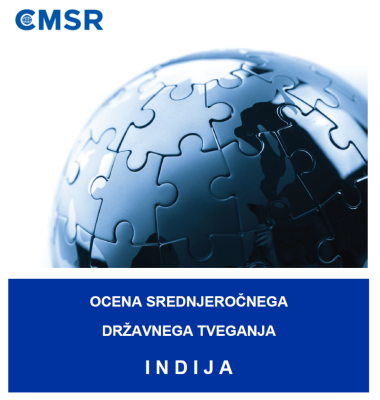CMSR prepared a new country risk assessment on the 15th of November, 2023: INDIA
17. 11. 2023
CMSR has its own country risk assessment methodology, which we use to prepare country risk assessments for any country on request.
We classify countries into five categories:
A: Minimum medium-term country risk
B: Very limited medium-term country risk
C: Limited medium-term country risk
D: High medium-term country risk
E: Very high medium-term country risk
CMSR assesses India better than the big three rating agencies. Moody's rates India at Baa3 with a stable outlook, Fitch at BBB- with a stable outlook and SP Global at BBB- with a stable outlook. All three ratings, when translated into a common numerical scale and compared to the CMSR scale, are identical. India would be in the upper end of the high medium-term country risk category (bordering on limited) when translated into the CMSR methodology. The ratings of the three rating agencies are in the investment grade category, bordering on speculative grade category. India disagrees with these ratings and has publicly expressed its disagreement on several occasions, arguing that it should be placed higher in investment grade category, at least in the A category (which would be between limited and very limited risk according to CMSR's methodology). EIU assesses India better, so does CMSR. According to the CMSR methodology India is classified as having limited medium-term country risk (only 1 point short of very limited risk).
We assess the medium term political risk as limited, the economic risk as limited (bordering on very limited) and the financial risk as very limited. In the April-May 2024 general elections we expect the ruling Bharatiya Janata Party (BJP) to win again and Narendra Modi to retain his position. This will ensure continuity with the current political and economic trajectories and reduce risks for investors. India's GDP growth will remain strong in the medium term – it is forecast to average 6% annually over the next five years. Economic policy is geared towards stimulating the domestic economy and improved infrastructure will help achieving this. A more attractive investment and business environment will lead to increased FDI inflows into manufacturing industries, however, bureaucracy, slow progress with structural reforms and land acquisition difficulties will contribute to India lagging behind the economies of South-East Asia in attracting FDI in high value-added manufacturing industries.
India is Slovenia's second most important foreign trade partner in Asia, however, we are running a large trade deficit. The Indian government is improving the business environment and offering special incentives to foreign investors in 25 industries, which also present opportunities for Slovenian companies. As the role of the state in the Indian economy is still very high, the presence of representatives of the Slovenian Government and Embassy is very important and also welcome on the Indian side in helping Slovenian companies to penetrate the Indian market and establish economic ties.
The Medium Term Country Risk Assessment for India can be ordered at: info@cmsr.si
More information: darja.zlogar@cmsr.si


